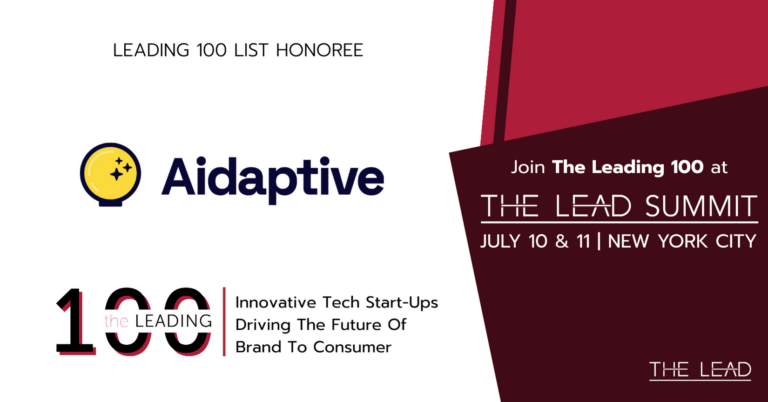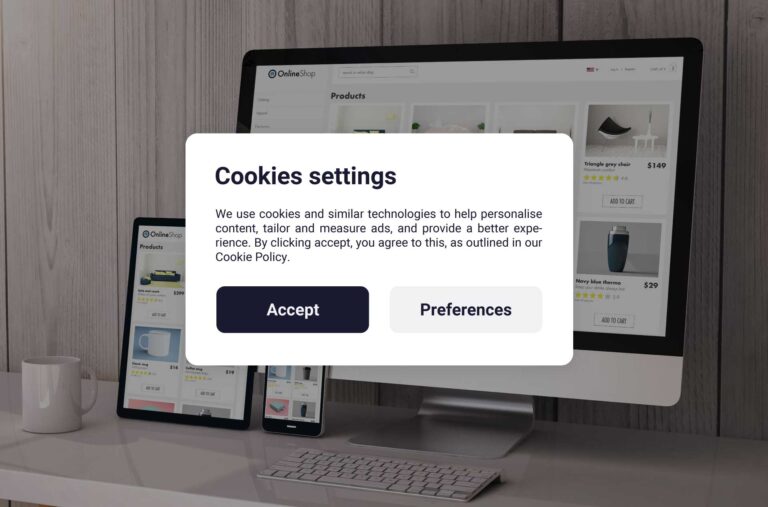While DTC eCommerce brands experienced a boom in recent years, the landscape has recently changed. Shifting market dynamics, rising customer acquisition and shipping costs, and intense competition have created significant challenges for leaders seeking to predictably scale revenue.
As margins continue to compress, we’ve found that forward-thinking brands are focused on building independent and agile ecosystems outside the major ad platforms that enable them to drive repeat customers without spending ad dollars after the initial customer acquisition.
According to industry experts, personalization is a key ingredient to that playbook.
For the time being, ad platforms will continue being the source for much of the first-time shopper traffic. 90%-95% of your store traffic is anonymous, with smartphone users making up 59.2% of global web traffic. So, it’s critical to be able to convert that anonymous traffic as quickly as possible to avoid needing to pay for the same shopper more than once. But herein lies the problem… because most traffic starts their journey anonymously, most brands have no clear or easy way to personalize the experiences for anonymous shoppers.
In this article, we will explore how you can maximize the conversion of anonymous visitors by leveraging artificial intelligence and machine learning technologies.
Anonymous visitors are data-rich
There are several data sources that can be used to identify, segment, or optimize for anonymous shoppers.
The first and most obvious is through some kind of web form or questionnaire. If a shopper has filled this out – with or without an email address – you have usable data to make experience alterations thereafter. At this point, they may no longer be anonymous, but any input besides contact information can be used.
The second – most prolific, easy, and immediate – is the contextual and browsing data that is generated and left behind by every person on the internet. Most of this is captured by Google Analytics (GA). Hundreds of attributes are captured automatically and immediately, while others can be collected by creating custom tracking events in GA or Google Tag Manager.
Finally, there are third-party data sources and technologies that will do cookie matching or provide an ocean of widely-sourced data that can be used to create profiles and run matching algorithms on. Products like Oracle BlueKai have thousands of segments defined where you can create custom targeting to match lookalike anonymous visitors.
Our focus here will be using the second category: data collected upon website entry and throughout website engagement by a web analytics tool. This is your first-party data, generated on your site, and free to use immediately.
Web Analytics Data
Google’s support website provides a list of data points that can be extracted from Google Analytics. There are a lot of items on the list.
The truth is you have a lot of gold to work with there. To summarize some of that data into categories, we have:
- Date, day, and time of visit
- Referring site URL
- Geography and network location
- Web browser type
- Device type and operating system
- Campaign and other source information (UTM parameters)
- Dozens of other technical attributes, such as Flash version, JavaScript support, screen resolution, etc.
So while you don’t have the shopper’s contact info, product preferences, past purchases, or feedback responses… you will know all of the above information before your homepage even loads for the shop visitor.
Of course, once that person actually interacts with your site – scrolling, clicking, visiting specific pages or content, applying filters and preferences, selecting features, and more – all of that behavioral information is also there to be collected by GA or any other analytics tool
In short, even though you do not precisely know who that person is, you still have large buckets of information about anonymous shoppers to work with.
Next up: how to use that anonymous shopper data to improve conversion rates on your store.
Getting to work
All of your known customers who have purchased from you, plus all of your leads, have data profiles. This is built from their buying journey, contextual info, survey or other submissions, and behavioral data.
Through analysis, you can determine correlations between those known customers’ profiles and the preferences or attributes that lead to purchases.
In essence, this exercise defines the characteristics of a customer from earlier in their journey that is statistically more likely to lead to certain types of actions down the funnel.
For example, shoppers that came from certain ad content and engaged early with multiple product categories are more likely to buy just once – versus different initial behavior from a shopper may correlate with many longer-term repeat purchases from your brand.
After that exercise, your next step is to match the data set for anonymous website visitors (from Google Analytics) to your historical data. You can create a similarity matrix between individual anonymous persons and your previous customers.
So, what does that mean?
After mapping and conducting statistical analysis, you’ll be able to determine the “lookalike” anonymous shopper to some sub-segment of customers.
Getting from data & analysis to action
You wield great power when you know the relationships between real purchase trajectories and the web behavior upon which they were predicated.
That power allows you to serve up the messaging, product recommendations, or experiences that you’ve seen work successfully in the past. Whether mimicking the old or testing for new successful pathways.
Further, as you tailor experiences for shoppers, you may notice some content versions or product recommendations aren’t converting as expected. The new, real-time success/failure data can be factored back into the analysis to improve the next time.
Thus you aren’t creating an optimization model from only past data, but also from in-the-moment lessons to keep pace with how consumer trends adapt.
As you may already be seeing, there are challenges in all this: running that complex statistical analysis; having accurate and valuable output from that analysis; and then doing real-time matching of the current anonymous site visitor to the right set of personalization elements. Plus doing it all at scale.
To solve that challenge, you’ll need to deploy an intelligence engine. Using machine learning models, real-time data ingestion, and API integrations, eCommerce AI platforms like Aidaptive can do the heavy data processing and update website pages dynamically.
With this in place, your team can display landing pages, hero text, banners, product recommendations, and other content tailored to each specific anonymous user. And all based on the data that’s already being captured.
Applying Artificial Intelligence and machine learning to increase conversions
Machine learning (ML) thrives in an environment of large data sets and predicting uncertain behavior. Why? Because it is not explicitly programmed to follow rules-based logic.
Instead, ML figures out the best path to optimize for your goal: conversions. The software is equipped with data (as much as possible) and statistical models. It’s situated within scalable infrastructure, so it can calculate decisions, push that intelligence live onto your site, and then improve from each success or failure.
For instance: a shopper may arrive on your store landing page via a specific paid social ad: which has a certain copy, creative, source, etc. Plus, they are associated with a device, operating system, time of day, geo-location, and so forth. (All of that GA data we talked about earlier fits in here.)
ML will determine probabilities of different behaviors based on tons of input – impossible for humans to do with any scale. It will run calculations in real-time and adjust on the fly to create a continuously evolving decision engine.
Based on the intelligence generated from your data, this example shopper will get a web experience that matches their predicted affinities and purchase trajectory. The next shopper one second later may get very different content and recommendations!
The premise of this whole strategy is predicated on the lesson that customers convert at a higher rate from personalized experiences. That piece has been widely understood and utilized for years.
So, where lies the opportunity to increase conversions and margins in 2023?
Even with uncertainty ahead, I’m confident that creating unique and personalized experiences for your anonymous shoppers by leveraging artificial intelligence and machine learning can increase your conversion rates by 10%-30%, as it has done for our existing customers.
Additionally, first-party data has become a strategic asset for growing DTC brands. By capitalizing on existing customer data to automatically personalize their journey to keep them coming back to your store, you will be able to reduce dependency on major ad platforms.
That’s not all. In many cases, every relevant business metric improves with an eCommerce AI platform like Aidaptive. From engagement and click-through rate to conversion rate and average order value resulting in improved ROAS and increased customer LTV.
Interestingly enough, other data points customers have isolated include better catalog exposure (enabling shoppers to discover new products) and interesting time on-site patterns (converting sessions are shorter, while non-converting sessions are longer).
The need for personalization is still an emerging trend. Our customers have shared with our team that the other solutions in the market are either too complex to deploy and maintain, too expensive, and/or don’t offer the automation and capabilities required for personalization to be effective. That’s why tools like Aidaptive are designed for quick deployment, easy integration and to give your store an automated, data-driven personalization brain that will engage and delight your customers from the first experience with your brand and throughout their lifecycle.
More resources:


